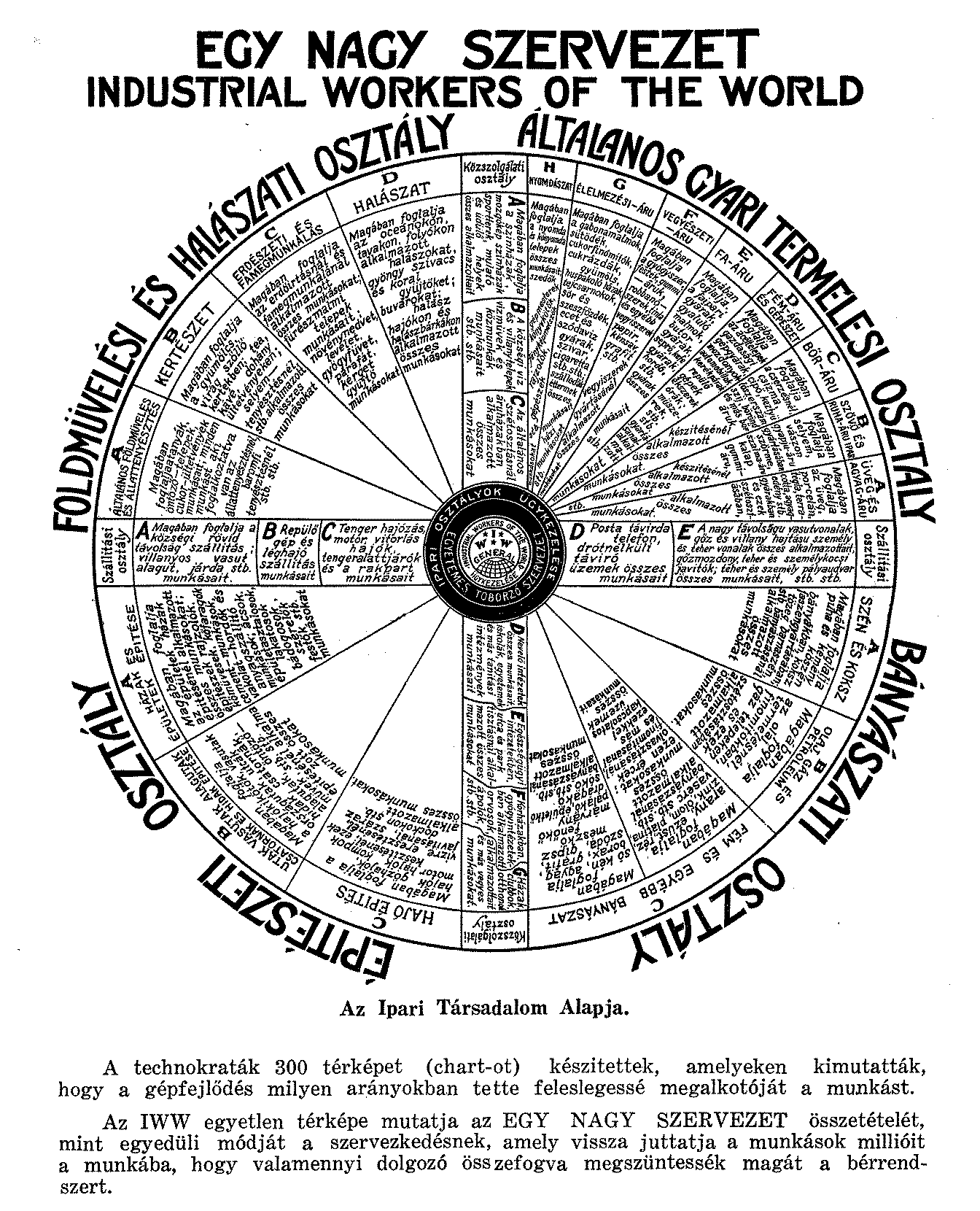
For a full-sized view, click on the picture.
The Technocrats created 300 charts in which they demonstrated the rates at which the development of the machine made its creators, the workers, unnecessary.
The IWW’s one chart shows the One Big Union’s composition, as the only mode of organization which will return millions of workers to work, so that all the workers joined together can abolish the wage system itself.
Translator's notes:
The Text:
The word “valamennyi”, in the second paragraph above, means “some”. However, when used in a sentence like this last line of the second paragraph of the text above, it refers to all the workers - literally meaning, something like “all the available”. Thus my transalation: 𠇊ll the workers joined together can abolish the wage system itself.”
The Wheel:
(Appears to be based on the 1920, American model)
Note the words above the Wheel, when transalated, read: One Big Organization, instead of One Big Union. The word “Szervezet” can mean “organization”, “machinery”, or “establishment” (etc.), but not in any case, “union”. The Hungarian word(s) used to mean “union” are entirely different. They are: “szövetség”, “eggyesület” or “unió”, to name a few. Interestingly, there is a word, “szakszervezet” that means “trade unions”. This often causes confusion because this word – “szakszervezet“, appears to stem from the word “szervezet”, thus leading people to assume that the word “szervezet” must mean union. This is not so. The two words have very different meanings. Without some historical background it is difficult to ascertain why the Hungarians used the word “organization” instead of “union”. I am assuming it is because for them, the IWW was one big “organization” whose structure they were attempting to adapt to the Hungarian situation.
Also, the words around the wheel, (from left to right) are: Department of Agriculture and Fishery , Department of General Factory Production, Department of Mining, and Department of Construction. – note the use of the word “Osztály”, this word, in this context means “Department”, but this word can also mean “Class”, if used in a different context. (such as discussing the “working class”). This happends a lot in Hungarian. Words have double, sometimes triple or quadruple meanings. It is why the context in which the words are used are important to discern, thus making the language more difficult to transalate.
The categories within the wheel are generally the same although they are in a different order. For example, Fishery is listed under Section D of the Dept of Agriculture and Fishery on the Hungarian version of the wheel, while in the 1920 English version it is listed under section C. – the categories on the wheel are basically the same, just in a slightly different order. Although, it is interesting to note that on the Hungarian wheel, under Lumber Workers(section B in English version and section C in the Hungarian version), the Hungarians included “collectors of healing plants and roots”.
The words “Industrial Union” are not used at all under any of the sections of the Hungarian wheel.
The words in the middle, around the IWW emblem say: “Administration of Industrial Classes”
Maintained by J. D. Crutchfield
Last updated 23 July 2004